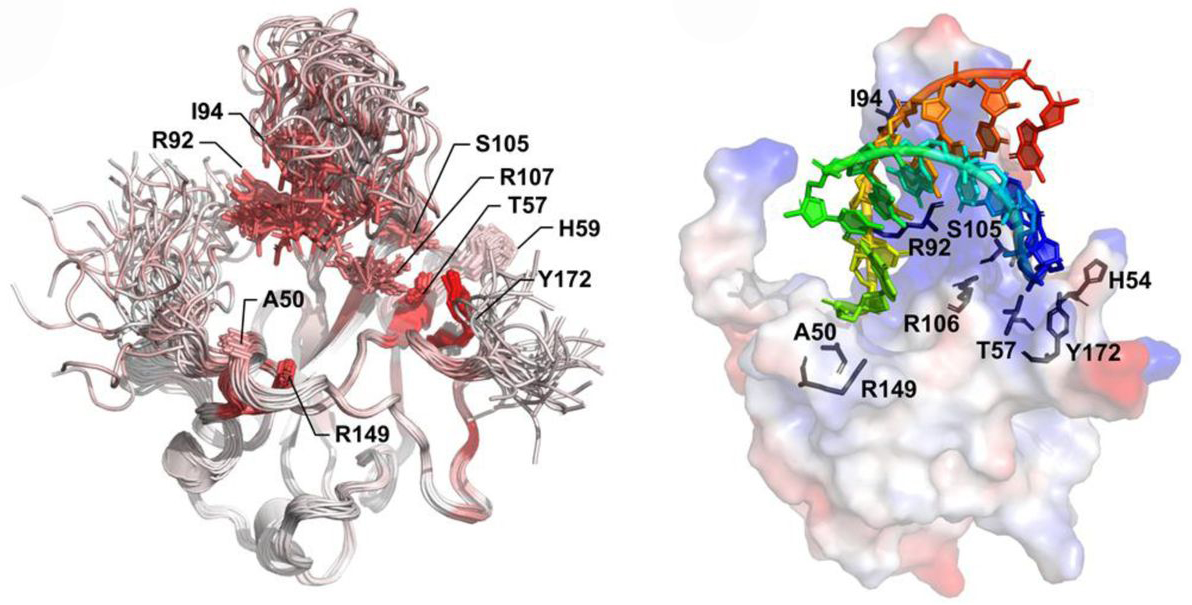Protein NMR Spectroscopy Services for Coronavirus Research
NMR spectroscopy is a mainstream approach for analyzing the structure of biological macromolecules, especially structural analysis of small proteins. This is a non-destructive method that provides chemical structure and kinetic information with atomic resolution. NMR spectroscopy is also suitable for studying molecular interactions under approximately physiological conditions, especially for investigating low- transient and low-affinity complexes. It can provide information on protein interaction interfaces, complex structures, and the dynamics of protein recognition processes. As a professional supplier of structural biology contract services, Creative Biostructure offers high-quality protein NMR spectroscopy services for your research on coronavirus infection.
Application of NMR Spectroscopy in Coronavirus Research
The harm of different types of coronavirus to human body varies greatly. Coronaviruses that can cause severe and fatal human coronavirus infections include SARS-CoV, MERS-CoV, and SARS-CoV-2 (novel coronavirus, provisionally named 2019-nCoV). In general, coronavirus has four structural proteins, namely nucleocapsid phosphoprotein (N), matrix (M), spike (S) protein and envelope (E) protein, as well as several non-structural proteins that work together with structural proteins to ensure viral replication in host cells. Among them, the N protein is a protein necessary for linking the coronavirus genome to the viral membrane. Its N-terminal RNA binding domain (N-NTD) captures the coronavirus RNA genome, while the C-terminal domain of N protein anchors the ribonucleoprotein complex to the viral membrane through its interactions with the M protein. In recent research, the structure of N-NTD of SARS-CoV-2 and its interaction with RNA were characterized using NMR spectroscopy, and a model of the N-NTD in complex with RNA was constructed. This model demonstrates how the N protein recognizes RNA and lays the foundation for structure-based drug design.
 Figure 1. An NMR structure model of the SARS-CoV-2 N-NTD:RNA complex. (Zhang L.; et al. 2020)
Figure 1. An NMR structure model of the SARS-CoV-2 N-NTD:RNA complex. (Zhang L.; et al. 2020)
Why Do You Need This Service?
The most important feature of the NMR spectroscopy approach is that it can measure the three-dimensional (3D) structure of biological macromolecule with atomic resolution under almost physiological environments or membrane mimetic states. In addition, it is the best strategy for providing unique information on biomolecular dynamics and intermolecular interactions and for detecting the residual structure of unfolded proteins and the structure of folded intermediates. If your coronavirus research requires to determine the small protein-ligand interactions or analyze the kinetic properties of biological macromolecules, then our protein NMR spectroscopy services for coronavirus research will be very supportive.
What We Can Do?
Over the past decade, backed by the state-of-the-art NMR spectroscopy platform, Creative Biostructure has provided customers with many high-quality 3D structure determination services of bio-macromolecule, including proteins and nucleic acids. Nowadays, we apply our expertise and experience in NMR to coronavirus-related research. Our NMR service consists of four main steps of the NMR experiment, namely sample preparation, data collection, spectral processing, and structural analysis. For larger proteins, we support the production of isotope-labeled samples and conduct three-dimensional NMR experiments.
Why Do You Choose Us?
- A team of experts experienced in NMR spectroscopy
- Advanced NMR instrument and spectrum processing software
- Security of project information and experimental data
- High-standard NMR applications and keep up with the latest developments in the technology
- Our customer service representatives are available 24 hours a day from Monday to Sunday
Contact us to discuss your project!
References
- Lan J.; et al. Structure of the SARS-CoV-2 spike receptor-binding domain bound to the ACE2 receptor. Nature. 2020: 1-9.
- Dinesh D C.; et al. Structural basis of RNA recognition by the SARS-CoV-2 nucleocapsid phosphoprotein. BioRxiv. 2020.

 Figure 1. An NMR structure model of the SARS-CoV-2 N-NTD:RNA complex. (Zhang L.; et al. 2020)
Figure 1. An NMR structure model of the SARS-CoV-2 N-NTD:RNA complex. (Zhang L.; et al. 2020)